Top 10 Frontend & Backend Frameworks
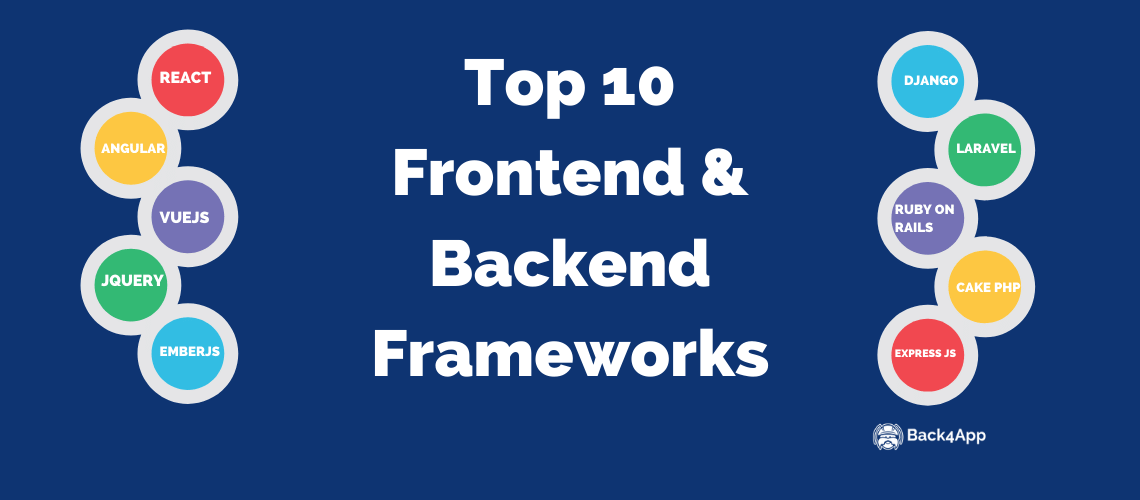
Frameworks have become an integral part of the web development process today because of the rising standards of web applications and the complexity of the technology required.
This is why frameworks are endorsed by web developers across the globe for building intuitive, interactive, and rich web applications. A web app has a frontend (client-side) and backend (server-side).
Keep reading to know more about them and also find out about the best frontend and backend frameworks that you can utilize.
Contents
- 1 What is a Framework?
- 2 Why use a Framework?
- 3 What is a Frontend?
- 4 What is a Backend?
- 5 Top 10 Frontend & Backend Frameworks
- 6 1. React (Frontend)
- 7 2. Angular (Frontend)
- 8 3. Vuejs (Frontend)
- 9 4. jQuery (Frontend)
- 10 5. Emberjs (Frontend)
- 11 6. Django (Backend)
- 12 7. Laravel (Backend)
- 13 8. Ruby on Rails (Backend)
- 14 9. Express JS (Backend)
- 15 10. Cake PHP (Backend)
- 16 Conclusion
- 17 FAQ
- 18 Why use a framework for software development?
- 19 What are the best frontend frameworks?
- 20 What are the best backend frameworks?
What is a Framework?
A software framework, or framework, is a platform for developing software applications. It is an abstraction in which software offering generic functionality can be changed selectively using additional user-written code, and hence, providing application-specific software. It provides developers with a foundation to develop and deploy their apps and it is a reusable, universal software environment.
Software frameworks might include compilers, support programs, toolsets, code libraries, and APIs (application programming interfaces) that bring together the different components to facilitate the development of a system or project.
Why use a Framework?
Building software is a complicated process. It includes a plethora of tasks, such as designing, coding, and testing. For the coding part alone, programmers have to take care of the declarations, syntax, statements, garbage collection, exceptions, and more.
Software frameworks make life easier for web and app developers by letting them take control of the software development process from a single platform.
The advantages of using a software framework:
- Saves times
- Scalable coding
- Security
What is a Frontend?
The frontend, in the parlance of web applications, refers to the area of the application or website with which visitors interact directly. Frontend web frameworks reduce the complexity of coders having to manually create code to dictate the behaviors and interactions between users and the app/site. These frameworks offer pre-written codes that developers can build on.
What is a Backend?
Backend frameworks are the libraries of server-side programming languages. They assist with building the backend configuration of web apps. Backend web frameworks provide tools that help with the development of tasks like, user authorization, security, URL routing, and database interaction. Using these frameworks gives developers a head start by eliminating the need to configure and build everything from scratch.
Top 10 Frontend & Backend Frameworks
Here are the best ten Frontend & Backend frameworks.
| Framework | Category | Programming Language | Famous Applications |
| React | Frontend | Javascript | Facebook Yahoo Khan Academy |
| Angular | Frontend | Typescript | Gmail Forbes PayPal |
| Vuejs | Frontend | Javascript | Chargebee Yousign Infermedica |
| jQuery | Frontend | Javascript | Upwork Udemy |
| Emberjs | Frontend | Javascript | TED Netflix Square |
| Django | Backend | Python | National Geographic Mozilla |
| Laravel | Backend | PHP | Deltanet Travel Neighborhood Lender World Walking |
| Ruby on Rails | Backend | Ruby | Twitter Zendesk Github |
| Cake PHP | Backend | PHP | Coconala Goodfirms Croogo |
| Express JS | Backend | Node | Uber Groupon GoDaddy |
Keep reading to know more.
1. React (Frontend)
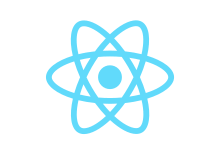
React, also known as ReactJS or React.js, is a frontend, open-source, JavaScript library for building UI components. It is maintained by Facebook, as well as, a community of individual companies and developers. React can be utilized as a base in developing mobile or single-page applications.
However, it is only concerned with state management and rendering that state to the DOM. This means that creating React applications would require additional libraries for routing and certain client-side functionality.
Advantages
- Seamless and consistent performance with the use of virtual DOM
- Reusability of components makes it easier to collaborate, as well as, reuse them in other parts of the app
- The ideal alternative to writing components in React Hooks as it lets developers write components without classes and also allows you to learn React easily
- The overall process of scripting components is simplified with the use of JSX, the free syntax extension
- React dev tools are useful and advanced
- React is SEO-friendly and the framework comes with a complete developer toolset
Features
- Stable and secure code
- Flexibility across web and mobile
- Unidirectional data binding
- Virtual DOM
- Enhanced performance and speed
- Ease in expanding and learning
- Highly compatible with vast libraries
- JSX – JavaScript Syntax Extension
- Debugging is faster and easier
2. Angular (Frontend)
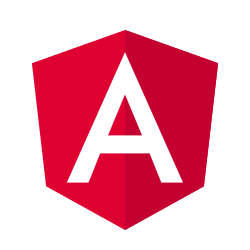
A list of the top frontend development frameworks is incomplete without Angular. This is a framework based on TypeScript. Developed by Google, it was launched officially in 2016. Angular was developed to bridge the gap between the rising demands of technology and traditional concepts that showed results.
Angular is unique with its two-way data binding feature, which means that there is a real-time synchronization between the view and the model. So, when any change is made in the model, it reflects on the view instantly and vice versa.
Angular is not only perfect for web or mobile apps, but you can also this framework to develop multi-page and progressive web apps. Companies like Blender, Forbes, BMW, and Xbox already deploy applications developed using Angular.
Advantages
- The Angular framework has in-built functionality to update that changes made in the model to the view instantly and vice versa
- Component-based architecture that provides a higher quality of code
- Components are reusable and can be managed easily using the dependency injection
- Developers can easily spot bugs, keep their code clean and understandable, and eliminate errors as they type because Angular is built with TypeScript
- Asynchronous data calls can be handled seamlessly with the help of RxJS (a library commonly used with Angular)
- Google Long-Term Support (LTS) assures that Google plans to further develop the framework, and therefore, developers have access to a vast community for support and learning
Features
- Two-way data binding
- Cross-platform
- MVC (Model-View-Controller) architecture
- Modular development structure
- Hierarchy dependency injection
- Ease in maintaining
- Virtual scrolling
- Less code framework
- Offers great flexibility
- High performance for single page hefty apps
- TypeScript-based (superset of JavaScript)
- Google Long-Term Support
3. Vuejs (Frontend)
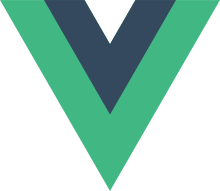
Vue.js is a model-view-viewmodel (MVVM), open-source frontend JavaScript framework for developing single-page apps and user interfaces. It was created by Evan You and the framework is maintained by him and his active core team members.
Vue is a straightforward, simple framework that is good at removing the challenges that Angular developers face. It helps users with multiple tasks and can handle dynamic and simple processes with ease – including mobile and web applications, and progressive web apps.
Even though the framework is built to optimize the performance of apps and tackle complexities, it is not massively popular among the market moguls. However, Xiaomi, Alibaba, and Reuters use this framework. Despite fewer takers from Silicon Valley, Vue continues to grow with respect to adoptions.
Advantages
- Simplicity is a huge advantage of the framework that allows developers to achieve good results while having to code only a few lines
- Single-file components can store all the codes in a single file and need relatively little overhead
- Vue.js can be easily integrated into other frameworks like React
- User-friendly and easy to learn as programmers are only required to know the basics of CSS, HTML, and JavaScript
- The framework can be used with common editors
- All of its functions are available readily and apps can be customized to suit specific needs
- Offers greater flexibility and fewer restrictions
- Good documentation
- A large community offering support for learning and frequently releasing updated information
Features
- Virtual DOM
- Built-in CSS transitions and animations
- Data binding using v-bind
- HTML-based templates
- Small size (greater compatibility)
- Simple syntax and integration
- Offers organized documentation
- Easy to understand
- Watchers (handles data changes)
- Vue-router (performs navigation between pages)
4. jQuery (Frontend)

Launched in 2006, jQuery is one of the earliest frontend frameworks and despite its launch date, it continues to be relevant in today’s tech world. This framework offers ease of use and simplicity, along with minimizing the need to write extensive JavaScript codes. There is also an extensive jQuery community that developers can rely on for solutions.
Fundamentally a library, this frontend framework is utilized to manipulate DOM and CSS and to optimize a website’s interactivity and functionality. Though mobile app development was not possible with jQuery in the past, recent developments have helped to expand the boundaries.
What’s more, the latest development in jQuery helps developers to build native mobile apps with its HTML5-based UI system-jQuery Mobile. Furthermore, the frontend framework is browser-friendly and supports almost all browsers.
Advantages
- Used widely due to its ease of use and simplicity
- Intuitive and easy to learn since the library is built using shorter and simpler codes
- Cross-browser compatibility
- A clean, powerful, and simple syntax makes it easier to pick the DOM elements
- The jQuery library is lightweight and lean
- Open-source library
- Cool effects and animations
- Highly extensible and pages load faster
- jQuery is SEO-friendly and facilitates dynamic content
Features
- DOM manipulation
- CSS manipulation
- HTML manipulation
- DOM element selection
- Utilities
- Animations and effects
- HTML event methods
- AJAX
- Extensibility through plug-ins
- JSON parsing
5. Emberjs (Frontend)
An open-source, JavaScript web framework, Ember.js utilizes a component-service pattern. It enables developers to develop scalable single-page web apps through the incorporation of best practices, common idioms, and patterns from other single-page-app ecosystem patterns into the framework.
Square, Apple Music, LinkedIn, Chipotle, and Twitch are some of the popular websites where Ember.js is used. Even though it is basically considered a framework for the web, Ember.js also helps in building mobile and desktop applications.
Apple Music is one of the most notable examples of an Ember.js desktop application, which is a feature of the iTunes desktop application. Tilde Inc. owns the Ember trademark.
Advantages
- Faster development due to Ember CLI
- High performance
- Two-way data binding
- Ember Inspector – own debugging tool
- Well-organized
- Understandable documentation
- Integrates with large teams easily
- Stability without stagnation
Features
- HTML and CSS are at the core of Ember.js’ development model
- The framework is used for creating maintainable and reusable JavaScript web apps
- Provides the instance initializers
- Ember Inspector tool for debugging Ember applications
- The routes are core features of the framework and used for managing the URLs
- Uses templates to update the model automatically, if the content of apps gets changed
6. Django (Backend)

Django is a Python-based open-source and free web framework. It follows the MTV (model-template-views) architectural pattern. Django Software Foundation or DSF is an American independent organization that maintains Django.
The primary goal of Django is to simplify the creation of database-driven, complex websites. The framework stresses the pluggability and reusability of components, low coupling, less code, the principle of don’t repeat yourself, and rapid development.
Python is utilized throughout, even for files, settings, and data models. The framework also provides an administrative create, read, update and delete interface that is optional and dynamically generated through introspection. The interface configures with the help of admin models.
Advantages
- Django is written in Python, which means that it is easy to learn
- Django and Python are core solutions in IT giants (Google, NASA, and more), blue chip companies, IoT and FinTech companies in Silicon Valley
- Includes a range of functionalities, such as MVC layout, free API, magical ROM, multi-language and multi-site support, AJAX support, session handling, easy database migrations, and more
- Extensive tutorials and documentation
- Administration interface
- A huge community that offers resources and updates
- Scalable and customizable
- Secure
- Built-in template system
Features
- Python web framework
- Excellent documentation
- High scalability
- SEO-friendly
- Offers high security
- Versatile in nature
- Thoroughly tested to withstand dynamic changes in the industry
- Facilitates rapid development
7. Laravel (Backend)
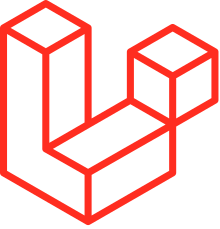
Created by Taylor Otwell, Laravel is an open-source, free PHP web framework based on Symfony. Its source code is hosted on GitHub. The framework was intended for the development of web apps following the MVC (model-view-controller) architectural pattern.
Some of the features of the framework are utilities that help in maintenance and application deployment, diverse ways for accessing relational databases, its orientation toward syntactic sugar, and a modular packaging system with a dedicated dependency manager.
Advantages
- Laravel simplifies implementing authentication, along with organizing authentic logic and control access to resources
- Drivers for Mailgun, SMTP, SparkPost, PHP’s mail function, Amazon SES and Sendmail is available, as well as, a simple and clean API over the SwiftMailer library
- Supports popular cache backends like Redis out-of-the-box and Memcached
- Highly secure web applications as Laravel protects against cross-site request forgery, SQL injection, and cross-site scripting
- Exception and error handling is already configured for all Laravel-based new projects
- Testing work is automated and a phpunit.xml file is already set up for the application
- Unified API across a wide variety of different queue backends
Features
- Built-in lightweight templates and multiple widgets incorporating JS and CSS code
- MVC architecture support
- Strong web application security
- Eloquent ORM (object relational mapping)
- Built-in command tools Artisan, which is responsible for automating tedious repetitive programming tasks
- Pre-installed Modular and Object-oriented libraries
8. Ruby on Rails (Backend)

Ruby on Rails, or simply Ruby, is written in Ruby under the MIT License. It is a server-side web application framework. The framework is an MVC (model-view-controller) framework and it provides a web service, default structures for a database and web pages.
Ruby facilitates and encourages the utilization of web standards like XML or JSON for data transfer and CSS, JavaScript, and HTML for user interfacing. Besides MVC, the framework gives prominence to the use of well-known paradigms and engineering patterns, such as CoC (convention over configuration), DRY (don’t repeat yourself), and the active record pattern.
The emergence of Ruby on Rails in the year 2005 influenced web app development greatly through state-of-the-art features like migrations, seamless database table creators, and scaffolding of views to allow rapid app development.
Even today, the influence of Ruby on Rails on other web frameworks remains apparent with so many frameworks in different languages borrowing its idea, including Catalyst in Perl, Django in Python, Grails in Groovy, Sails.js in Node.js, CakePHP, Yii, and Laravel in PHP, Play in Scala and Phoenix in Elixir.
Please read the tutorial Hosting Ruby on Rails to deploy an application with ease.
Advantages
- The framework is 100% free and runs on Linux
- Built on the MVC architecture that centralizes the app’s business logic and rules to manipulate data
- Changes can be managed easily
- In-built security measures
- Exceptional performance
- Highly flexible as web apps can make use of Rails’ backend and frontend capabilities
- Offers high productivity and enables developers to build features rapidly when combined with third-party libraries
- A large community offering solutions and support
Features
- Based on the MVC (model-view-controller) architecture
- RoR emphasizes DRY (don’t repeat yourself) and CoC (convention over configuration) principles
- Rails’ large community proactively works to patch new vulnerabilities
- Modifying an existing code is easy and simple
- Powerful and robust library, called Active Record
- Simple testing tool, called RSpec
- Object-oriented programming language, which is concise, simple, and closer to the English language
9. Express JS (Backend)

Released as open-source and free software under the MIT License, Express or Express.js is a backend web application framework for Node.js. The framework is designed to build APIs and web applications. Express has been called the de facto standard server framework for Node.js.
The framework is described as a Sinatra-inspired server by TJ Holowaychuk, the original author. This means that Express is relatively minimal with a wide range of features available as plugins.
Express.js is the backend component of many popular development stacks including MERN, MEAN, or MEVN stack, along with a JavaScript frontend library or framework.
Advantages
- Easy to customize and configure
- Makes the development of Node.js application easy and fast
- Allows developers to define routes of your app based on URL and HTTP methods
- Simple to integrate with various template engines like Vash, Jade, EJS, and so on
- The framework includes various middleware modules which can be used to perform additional tasks on response and request
- Error handling middleware can be defined
- REST API server can be created
- Easy to connect with databases like Redis and MySQL
- Easy to serve resources and static files of your application
Features
- Middleware is part of the framework that allows you to access the database
- Faster server-side development
- Advanced routing mechanism
- High-end templating engines that developers can use to build dynamic content for web pages by building HTML templates on the server-side
- Debugging mechanism
10. Cake PHP (Backend)
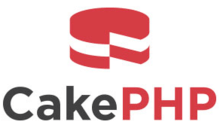
CakePHP follows the approach of the model-view-controller (MVC) and it is an open-source framework. It is written in PHP and modeled after the concepts of Ruby. It is distributed under the MIT License.
The framework makes use of popular software engineering concepts, as well as, software design patterns like model-view-controller, conventional over configuration, front controller, association data mapping, and active record.
Advantages
- No pre-configuration required, and therefore, CakePHP saves developers from a lot of hassle
- Open-source platform and easily accessible to all
- In-built ORM (object relational mapping) allows developers to convert data between an incompatible system using the object-oriented programming language
- CRUD scaffolding
- Reusable code parts can be created that can be reused more than once for more than a single project
- The framework has the ability to test all critical and fragile points of your app
- Offers a highly secure environment
- Proper class inheritance
- MVC pattern
- A friendly license that can be easily extended with plug-ins and components
Features
- Flexible and easy licensing
- Friendly, active, and a large community
- Integrated CRUD for database interaction
- The framework is highly compatible with versions 4 and also 5 of PHP
- Code generation
- Application scaffolding
- Built-in validation
- MVC architecture
- Flexible and fast templating (PHP syntax, along with helpers)
- Request dispatcher with extremely clean, tailored routes and URLs
- Localization
- Flexible ACL
- Flexible caching
- Data sanitization
- Cookie, Email, Session, Security, and Request Handling Components
- View Helpers for JavaScript, AJAX, HTML Forms, and so on
- Works from any website directory, with little to no Apache configuration involved
Conclusion
Choosing the appropriate tech stack for developing websites and applications might not be a piece of cake, but a lot depends on what technology pairs with it and the application use case.
Even though most developers typically prefer to work with frameworks that they are familiar with, they are often left with little choice but to experiment with new frameworks.
So, if you are thinking of trying new frameworks, the mentioned list should help you to get started.
FAQ
Why use a framework for software development?
A framework is a platform for developing software applications. It provides developers with a foundation to build and deploy their apps, and it is a reusable, universal software environment. The advantages of using a framework are saving time, scalable coding, and security.
What are the best frontend frameworks?
– React
– Angular
– Vue.JS
– Ember.JS
– jQuery
What are the best backend frameworks?
– Django
– Ruby on Rails
– CakePHP
– Lavavel
– Express.JS



